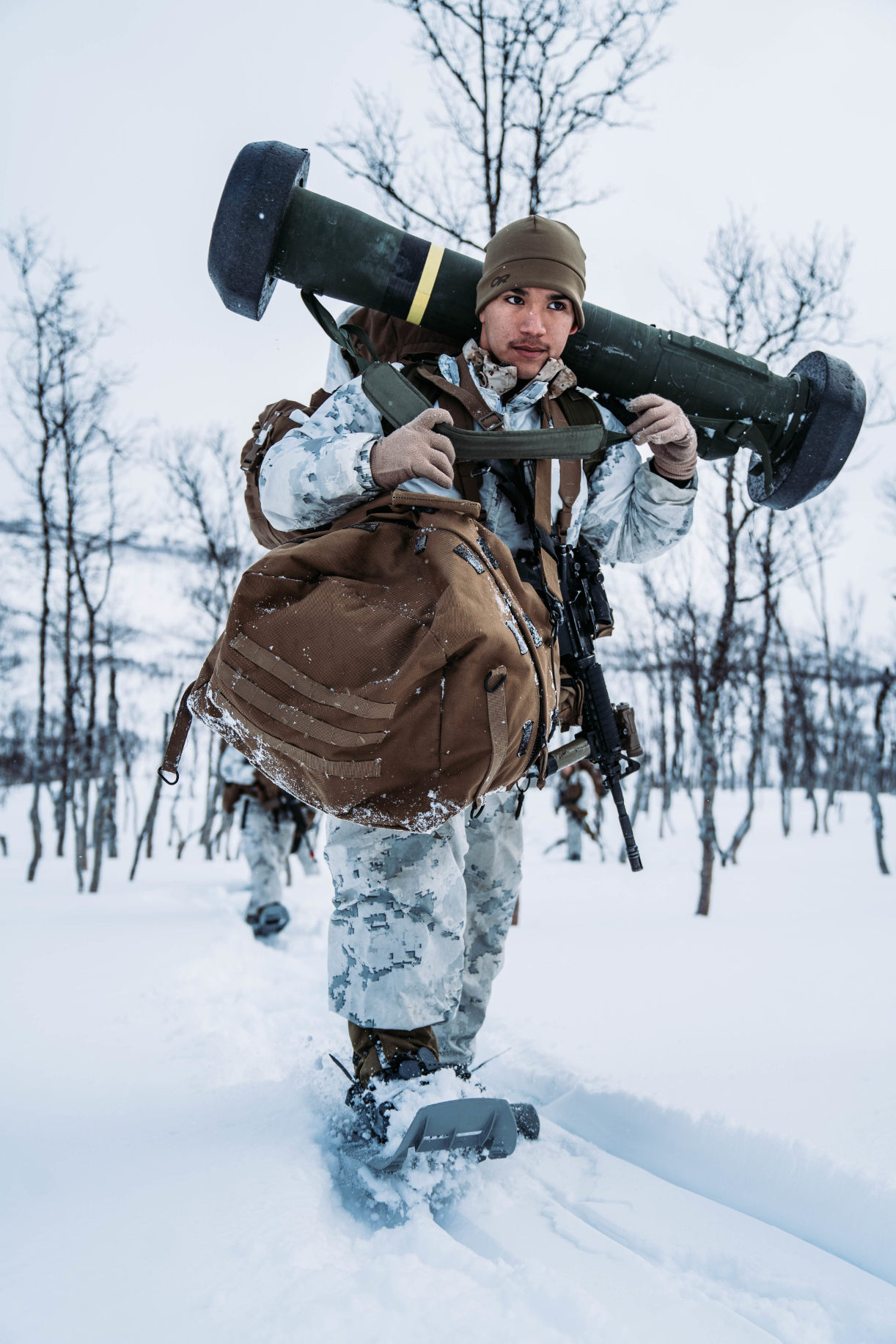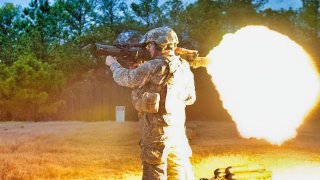Carl Gustaf Recoilless Rifle Looks Like a Bazooka (But It Destroys Tanks)
The war in Ukraine has highlighted the effectiveness of shoulder-fired anti-tank weapons, with the Carl Gustaf recoilless rifle playing a crucial role.
Summary and Key Points: The war in Ukraine has highlighted the effectiveness of shoulder-fired anti-tank weapons, with the Carl Gustaf recoilless rifle playing a crucial role.

-Developed by Saab post-WWII, the Carl Gustaf fires 84 mm anti-tank rounds with minimal recoil, making it ideal for light infantry. The weapon's evolution includes the M3 variant, adopted by the U.S. military in 2015, and the lighter, more compact M4 introduced in 2017.
-The Carl Gustaf's ability to fire diverse munitions, including anti-tank, airburst, and smoke rounds, provides Ukrainian forces with versatile tactical options. This adaptability has proven invaluable in ambushing Russian armor and vehicles since the 2022 invasion.
Shoulder-Fired Anti-Tank Weapons: The Carl Gustaf's Role in Ukraine
The war in Ukraine has affirmed some theories of modern warfare while upending others. One doctrine being re-examined is light infantry’s use of shoulder-fired anti-tank weapons. Ukrainian defenders have used these weapons to inflict a heavy toll on Russian armor and vehicles.
Western nations have exported multiple types of anti-tank weapons to Ukraine. One of the most notable is the Carl Gustaf recoilless rifle designed by Swedish manufacturer Saab.
The History of Carl Gustaf
Development of the Carl Gustaf began right after the Second World War. During that conflict, the American-made Bazooka and the German Panzerschreck showed how effective infantry-fired light anti-tank weapons could be.
Saab’s design was for a shoulder-fired recoilless rifle capable of firing 84 mm anti-tank ammunition.
Recoilless rifles operate on the principle that equal but opposite forces counteract each other. In this case, the weapon fires a charge of gas rearward at the moment a projectile is launched to greatly reduce recoil. This allows a small, light weapon to fire heavy projectiles. The reduction in size and weight of the launcher is imperative for light infantry forces, and the large projectile makes them effective against modern armor.
New Gustaf variants sport enhanced capabilities
Throughout the latter half of the 20th century, Saab continued to improve on its original design, releasing the M2 in 1964 and the M3 in the 1980s. The design saw great success in the Congo crisis in the 1960s and was revived during the Afghanistan War in the 2010s. As that conflict continued, U.S. infantry commanders found themselves unable to respond to RPG attacks by Taliban forces. These attacks often occurred when infantry was dismounted and did not have access to their vehicle-mounted support weapons.
While U.S. Special Forces had been using the Carl Gustaf M3 since the 1990s, the regular Army needed something lighter and cheaper than their existing shoulder-fired weapons – models such as the M72 LAW and M136 AT4 – to engage targets at the range of RPGs. In 2014, the M3 became a Program of Record, and by 2015 the Pentagon equipped all infantry platoons with at least one M3.
In 2017, the U.S. purchased the new M4 launcher. Designated the M3E1, it is 7.5 lbs lighter and 3 feet shorter, making it much easier to wield in constricted spaces such as urban terrain.
In addition to high-explosive anti-tank rounds, the Gustaf can fire airburst munitions against troops in cover, flechettes to decimate troops in the open, illumination shells for nighttime activities, and smoke to hide movement. This range of projectiles makes the weapon ideal for light infantry formations tasked with multiple mission sets.
The latest iteration of this weapon is the M4. As detailed by Army Technology, “The Carl-Gustaf M4 is flexible, with various existing and future ammunition types, including anti-armour, anti-structure, multi-role, anti-personnel, and support rounds such as smoke and illumination. It is also compatible with programmable ammunition, providing dismounted soldiers with advanced capability. The guided Carl-Gustaf munition can accurately engage stationary or moving targets at distances of up to 2,000m.”
Shoulder-Fired AT Weapons in Ukraine:
Since Russia invaded in 2022, the Ukrainian Armed Forces have proven very successful at launching ambushes and hit-and-run attacks on Russian armor and vehicles with light infantry wielding anti-tank weapons. Western nations have sent several types of such weapons to Ukraine, including the U.S.-made Javelin and the British NLAW. While both of these systems are highly effective at attacking tanks, the Carl Gustaf has the added benefit of flexible munitions.

About the Author: Maya Carlin, Defense Experts
Maya Carlin, National Security Writer with The National Interest, is an analyst with the Center for Security Policy and a former Anna Sobol Levy Fellow at IDC Herzliya in Israel. She has by-lines in many publications, including The National Interest, Jerusalem Post, and Times of Israel. You can follow her on Twitter: @MayaCarlin.


